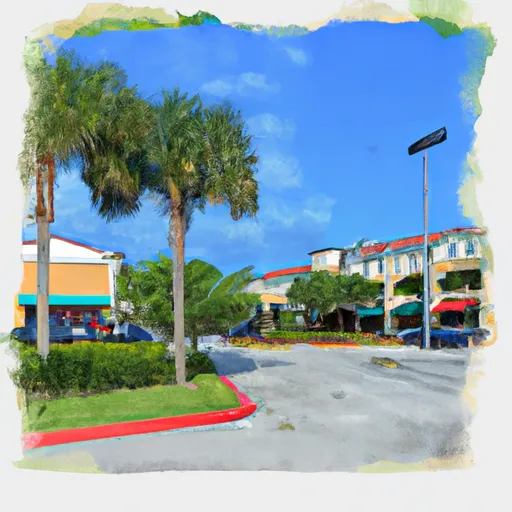-
 Snoflo Premium
Snoflo Premium
Get unlimited access to all our content
With no Ad interruptions! - Start Your Free Trial Login with existing account
Merritt-Island
Eden Index
Climate
6.8
•
Recreation
5.4
•
Community
3.5
•
Safeguard
5.5/10

Merritt Island, located on the eastern coast of Florida, offers a diverse range of attractions and outdoor opportunities. The climate in Merritt Island is characterized by mild winters and hot, humid summers. Average temperatures range from the mid-60s (°F) in winter to the mid-90s in summer. The area experiences abundant rainfall, particularly during the summer months, which contributes to the lush vegetation and diverse hydrology constituents.
Merritt Island is surrounded by the Indian River Lagoon, Banana River, and the Atlantic Ocean, making it a haven for water-related activities. These include boating, fishing, kayaking, and paddleboarding, with ample opportunities to explore the many estuaries, mangroves, and marshes in the area. Additionally, the nearby Merritt Island National Wildlife Refuge provides a habitat for various wildlife species, including alligators, manatees, and over 300 species of birds, attracting birdwatchers and nature enthusiasts.
Outdoor recreation opportunities extend beyond water activities, as Merritt Island offers numerous parks, forests, and trails suitable for hiking, biking, and wildlife observation. Visitors can also enjoy camping, picnicking, and observing rocket launches at the nearby Kennedy Space Center. Overall, Merritt Island provides a diverse range of outdoor experiences, making it a popular destination for nature lovers and adventure seekers.
What is the Eden Index?
The Snoflo Eden Index serves as a comprehensive rating system for regions, evaluating their desirability through a holistic assessment of climate health, outdoor recreation opportunities, and natural disaster risk, acknowledging the profound impact of these factors on livability and well-being.
Climate Health Indicator (CHI): 6.8
Merritt-Island receives approximately
1320mm of rain per year,
with humidity levels near 88%
and air temperatures averaging around
23°C.
Merritt-Island has a plant hardyness factor of
9, meaning
plants and agriculture in this region tend to thrive here all year round.
By considering the ideal temperature range, reliable water supplies, clean air, and stable seasonal rain or snowpacks, the Climate Health Indicator (CHI) underscores the significance of a healthy climate as the foundation for quality living.
A healthy climate is paramount for ensuring a high quality of life and livability in a region, fostering both physical well-being and environmental harmony. This can be characterized by ideal temperatures, reliable access to water supplies, clean air, and consistent seasonal rain or snowpacks.
Weather Forecast
Streamflow Conditions
East Florida Coastal
Area Rivers
East Florida Coastal
Snowpack Depths
East Florida Coastal
Reservoir Storage Capacity
East Florida Coastal
Groundwater Levels
Recreational Opportunity Index (ROI): 5.4
The Recreational Opportunity Index (ROI) recognizes the value of outdoor recreational options, such as parks, hiking trails, camping sites, and fishing spots, while acknowledging that climate plays a pivotal role in ensuring the comfort and consistency of these experiences.
Access to outdoor recreational opportunities, encompassing activities such as parks, hiking, camping, and fishing, is crucial for overall well-being, and the climate plays a pivotal role in enabling and enhancing these experiences, ensuring that individuals can engage in nature-based activities comfortably and consistently.
Camping Areas
| Campground | Campsites | Reservations | Toilets | Showers | Elevation |
|---|---|---|---|---|---|
| Jetty Park | 150 | 9 ft | |||
| Donald MacDonald Campgrounds | 29 | 15 ft | |||
| Wickham Park | 88 | 31 ft | |||
| Okee-Tantie Campground and Marina | 270 | 17 ft | |||
| Manatee Hammock Park | 177 | 18 ft | |||
| Manatee Cove Military - Patrick AFB | None | 6 ft |
Catastrophe Safeguard Index (CSI):
The Catastrophe Safeguard Index (CSI) recognizes that natural disaster risk, encompassing floods, fires, hurricanes, and tornadoes, can drastically affect safety and the overall appeal of an area.
The level of natural disaster risk in a region significantly affects safety and the overall livability, with climate change amplifying these risks by potentially increasing the frequency and intensity of events like floods, fires, hurricanes, and tornadoes, thereby posing substantial challenges to community resilience and well-being.
Community Resilience Indicator (CRI): 3.5
The Community Resilience Indicator (CRI) recognizes that education, healthcare, and socioeconomics are crucial to the well-being of a region. The CRI acknowledges the profound impact of these elements on residents' overall quality of life. By evaluating educational resources, healthcare accessibility, and economic inclusivity, the index captures the essential aspects that contribute to a thriving community, fostering resident satisfaction, equity, and social cohesion.

